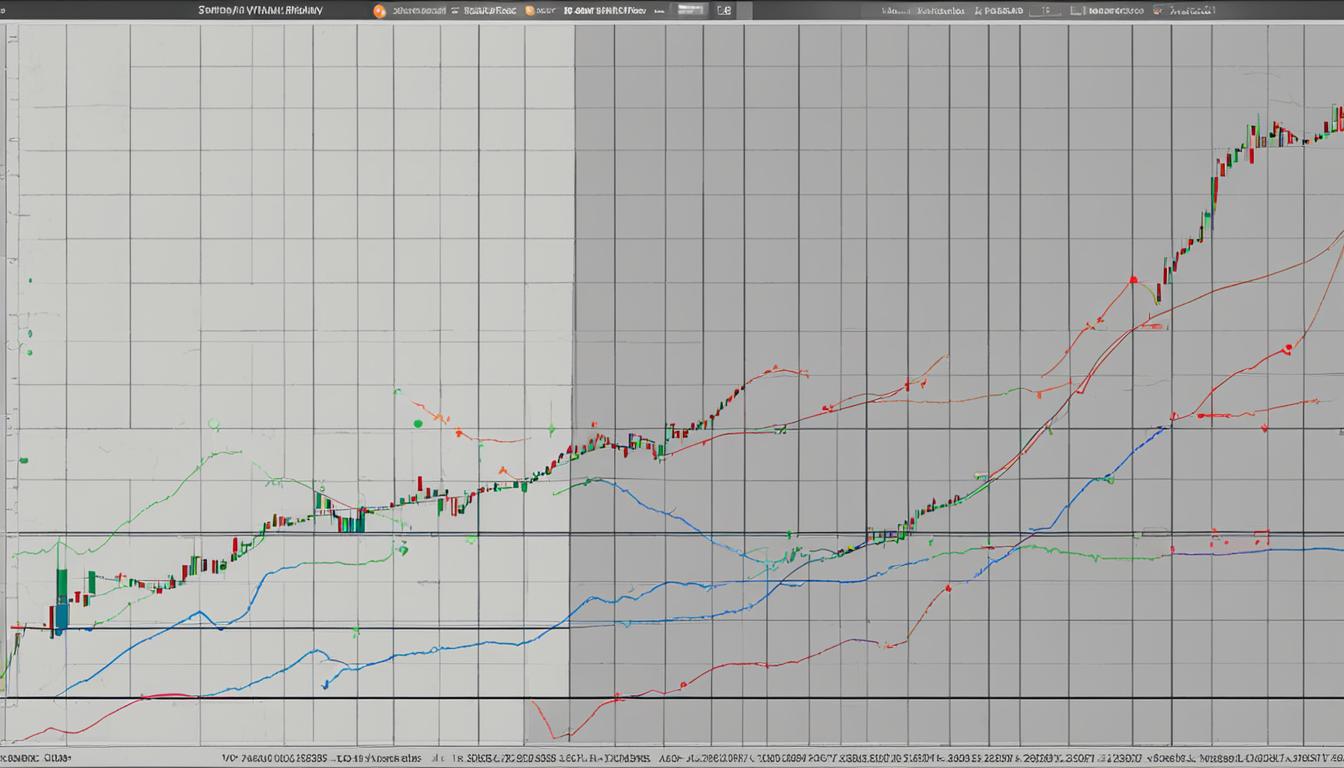Unusual Options Activity: How to Track and Capitalize on Market Anomalies

Introduction
Unusual options activity refers to options contracts trading at a significantly higher volume relative to their open interest. This spike in activity often signals what “smart money” is doing, as large volume orders can indicate new positions and potentially forecast big moves in the underlying asset.
Tracking and understanding unusual options activity is essential for traders and investors because it provides valuable insights into market sentiment and potential price movements. By identifying notable trading volumes and analyzing options contracts, you can gain an edge in predicting market anomalies and making informed trading decisions.
Monitoring unusual options activity helps identify potential market anomalies by:
- Uncovering hidden patterns in trading behavior.
- Signaling significant shifts in investor sentiment.
- Providing early indicators of upcoming volatility.
For those looking to dive deeper into advanced trading strategies, consider exploring Short Straddle Strategies or understanding Options Settlement. These resources can complement your knowledge of unusual options activity and enhance your overall trading approach.
Additionally, mastering technical analysis tools such as the RSI Indicator can provide a strategic edge in the market. Understanding these concepts not only sharpens your analytical skills but also equips you with the tools needed to capitalize on market opportunities.
Understanding Unusual Options Activity
Options contracts are financial instruments that give the holder the right, but not the obligation, to buy or sell an underlying asset at a predetermined price before or at a specific expiration date. To fully understand unusual options activity, it’s important to know about two main things: trading volume and open interest.
Trading Volume and Open Interest
- Trading Volume: This is the total number of options contracts traded during a given period. High trading volume means there’s a lot of interest and activity in a particular contract.
- Open Interest: This refers to the total number of outstanding options contracts that have not been settled or closed. Unlike trading volume, open interest gives us an idea of how many people are involved in a specific options contract.
The relationship between trading volume and open interest is key in identifying unusual options activity. Usually, there’s a balance between these two metrics. But when there are deviations from this normal pattern, it could mean something unusual is happening in the market.
The Role of Trading Volume and Open Interest
Looking at how trading volume and open interest interact can help us spot deviations from what’s considered normal in the market. Here are two examples:
- High Trading Volume with Low Open Interest: This often suggests new positions being opened, which could indicate a shift in market sentiment or directional bets by traders.
- High Trading Volume with High Open Interest: This shows ongoing market interest and possibly heavy speculation on future movements of the underlying asset.
By comparing these metrics, we can identify unusual patterns that might suggest significant moves in the underlying asset.
Importance of Analyzing Trading Volume and Open Interest
To effectively track unusual options activity, it is essential to:
- Monitor High Trading Volume: Look for spikes in trading volume as initial indicators of heightened trader interest.
- Evaluate Open Interest Changes: Assess whether increases in open interest support sustained market participation or if decreases indicate profit-taking or position closures.
- Identify Discrepancies: Uncover any significant discrepancies between trading volume and open interest to pinpoint potential market anomalies.
Incorporating historical data further enriches this analysis by providing context for what constitutes typical behavior versus anomalies. Understanding how past trends shape current expectations can help us make better decisions.
How to Track Unusual Options Activity
Using Order Flow as a Key Indicator
Order flow analysis is a powerful tool for tracking unusual options activity. By examining the sequence of buy and sell orders, you can gain insights into market sentiment and potential future price movements. When a large volume of options contracts is bought or sold, it often indicates significant interest in the underlying asset.
Key Aspects of Order Flow Analysis:
- Transaction Size: Large trades are typically executed by institutional investors or “smart money,” which can signal an impending move.
- Order Timing: The timing of large orders can reveal market strategies, such as positioning ahead of earnings announcements or economic data releases.
- Market Conditions: Analyzing order flow in conjunction with overall market conditions can provide context to unusual activity.
For instance, if you notice a sudden surge in call option buying for a particular stock while the broader market is stable, it might suggest that traders expect positive news or a strong performance from that company.
The Significance of the Volume-to-Open Interest Ratio
The volume-to-open interest ratio is another crucial metric for detecting unusual options activity. This ratio compares the number of traded contracts (volume) to the total number of outstanding contracts (open interest). A high ratio can indicate increased trading interest and potential market anomalies.
Calculating the Volume-to-Open Interest Ratio:
[ \text{Volume-to-Open Interest Ratio} = \frac{\text{Trading Volume}}{\text{Open Interest}} ]A ratio significantly above 1 suggests that new positions are being established rather than existing ones being closed. Traders use this information to infer whether there’s fresh bullish or bearish sentiment.
Practical Application:
- Identifying Breakouts: A high volume-to-open interest ratio in call options may signal an upcoming breakout due to new bullish positions.
- Spotting Trends: Persistent high ratios over several days can indicate sustained interest in the underlying asset, helping you spot emerging trends.
Incorporating both order flow analysis and the volume-to-open interest ratio into your trading strategy provides a comprehensive approach to understanding unusual options activity. These techniques allow you to identify hidden patterns and capitalize on market opportunities.
To further enhance your trading skills, it’s worth exploring resources like Master the Art of Rolling Options to Maximize Your Profits and What Are Options Quotes?. These guides offer valuable insights into advanced trading techniques and understanding various components of an option quote.
By continuously monitoring these indicators, you can stay ahead of market trends and make informed trading decisions.
Understanding the Volume-to-Open Interest Ratio
One important metric for tracking unusual options activity is the volume-to-open interest ratio. This ratio helps us understand how active and significant the trading activity is compared to existing positions.
To calculate the volume-to-open interest ratio, we simply divide the trading volume of an options contract by its open interest:
[ \text{Volume-to-Open Interest Ratio} = \frac{\text{Trading Volume}}{\text{Open Interest}} ]This ratio can provide valuable insights into market dynamics and potential trading opportunities. Let’s explore how it works and how we can use it effectively.
Why is the Volume-to-Open Interest Ratio Important?
The volume-to-open interest ratio is significant because it:
- Highlights Unusual Trading Activity: A high ratio suggests a surge in trading volume, indicating that new positions are being established.
- Reveals Potential Market Anomalies: Significant deviations from historical norms can signal market inefficiencies or upcoming events that may impact the underlying asset.
How to Interpret the Volume-to-Open Interest Ratio
When analyzing the volume-to-open interest ratio, here are some key points to consider:
- High Ratio: A ratio significantly higher than usual indicates increased trading activity and potential market excitement.
- Low Ratio: Conversely, a ratio much lower than usual suggests limited interest in the options contract.
- Consistency: Regularly monitoring this ratio can help identify consistent patterns over time and distinguish between temporary fluctuations and meaningful trends.
- Contextual Analysis: It’s essential to evaluate the volume-to-open interest ratio alongside other indicators like order flow or news events for a more comprehensive understanding of market sentiment.
Practical Application of the Volume-to-Open Interest Ratio
Let’s look at an example to see how we can apply this concept in real-world scenarios:
- Suppose an options contract typically has a volume-to-open interest ratio of 0.5.
- Suddenly, we observe that the ratio jumps to 2.0.
In this case, such a significant increase in the ratio could be a red flag or an opportunity worth investigating further.
Integrating the Volume-to-Open Interest Ratio into Your Analysis
As an options trader, you can leverage the volume-to-open interest ratio as part of your analysis toolkit to:
- Identify potential trading opportunities based on unusual options activity.
- Validate or challenge existing market assumptions.
- Manage risk by monitoring changes in trading sentiment.
Remember, understanding how to interpret and use this ratio effectively requires experience and context. Over time, you’ll develop a better intuition for its implications within different market conditions.
Enhancing Your Options Trading Strategies
In addition to tracking unusual options activity, exploring neutral options strategies can further enhance your trading approach by providing flexibility and potential profit opportunities regardless of market direction.
By combining these two elements – monitoring the volume-to-open interest ratio and utilizing neutral strategies – you can strengthen your decision-making process and improve your overall trading performance.
Tools for Monitoring and Analyzing Unusual Options Activity
Introduction to Barchart Premier Memberships
Barchart Premier Members enjoy exclusive advantages, which are particularly beneficial for options traders. A Premier Membership provides access to advanced tools, comprehensive data, and detailed market analysis.
Benefits include:
- Enhanced Data Access: Real-time market data, historical data, and in-depth analytics.
- Customizable Tools: Advanced screening tools that can be tailored to your specific trading strategies.
- Expert Analysis: Daily insights and expert commentary that help you stay ahead of market trends.
Using the Options Screener Tool
The Options Screener is a pivotal tool for tracking and filtering unusual options activity. It allows you to set specific criteria to identify options contracts exhibiting significant deviations from their usual trading patterns.
Steps to use the Options Screener effectively:
- Log into your Barchart Premier account.
- Navigate to the Options Screener tool.
- Set your filters:
- Volume: Identify contracts with unusually high trading volume.
- Open Interest: Filter by changes in open interest to see where new positions are being taken.
- Expiration Date: Focus on contracts with upcoming expiration dates for potential short-term movements.
- Analyze Results:
- Look for discrepancies between volume and open interest.
- Investigate unusual patterns or spikes in activity.
Using these features, you can pinpoint opportunities that might indicate significant market moves. The combination of real-time data and customizable filters ensures you can act swiftly on emerging trends.
For more insights into the significance of open interest in option contracts, it’s worth exploring this resource which unveils the hidden power of open interest in option contracts, helping you gain insights into market trends and investor sentiment for smarter investment decisions.
Additionally, if you’re an options trader seeking to expand your portfolio beyond traditional options, it’s worth considering FX Options Trading. This insightful comparison of FX Spot vs FX Option trading can help you make informed financial decisions and explore new avenues for skilled traders in the US.
Interpreting Unusual Options Activity: Case Studies
Real-World Case Studies
Analyzing unusual options activity in real-world scenarios reveals insightful patterns and trends. For instance, examining a sudden spike in options trading volume for a major tech stock can indicate impending significant moves. A notable example is when a large number of call options were purchased for Apple Inc. just before the company announced a groundbreaking new product, resulting in a substantial increase in the stock price.
Another case involved Tesla, where unusual put option activity indicated that investors were anticipating a decline in stock value following an earnings report. The subsequent drop validated the predictive power of tracking unusual options activity.
Impact on Stock Market, ETFs, and Indices
Unusual options activity isn’t confined to individual stocks; it also impacts broader market instruments like ETFs and indices. For example, observing high-volume trades in the SPDR S&P 500 ETF (SPY) can signal overall market sentiment. Significant put option purchases might suggest a bearish outlook, potentially leading to a market-wide sell-off.
Similarly, identifying unusual trading patterns in sector-specific ETFs can provide insights into industry trends. For instance, increased call option activity in the Technology Select Sector SPDR Fund (XLK) could indicate bullish sentiment towards the tech sector, suggesting potential gains within that space.
To delve deeper into patterns within specific sectors like technology, consider exploring our detailed analysis on The Tech Rally 2024, where we investigate whether the Tech Rally 2024 will maintain its course and share insights on its sustainability.
Understanding how trading halts influence options trading further complements this analysis. For more information on this topic, read our guide on the Influence Of Trading Halts On Options Trading, which explains the risks associated with trading halts and provides strategies to mitigate them.
These case studies underscore the importance of monitoring unusual options activity to make informed trading decisions across various market conditions.
Accessing Historical Data for Enhanced Analysis
Incorporating historical options data into your analysis of unusual activity trends can provide a deeper understanding of market behavior and potential anomalies. Historical data helps you identify recurring patterns, determine the significance of current unusual activities, and make informed trading decisions.
Importance of Historical Options Data
Historical options data allows you to:
- Spot Long-term Trends: Recognize patterns that repeat over time.
- Validate Current Anomalies: Compare present unusual activities with past events to assess their relevance.
- Enhance Predictive Accuracy: Use historical trends as a benchmark for future predictions.
Guide to Accessing Reliable Sources
Reliable sources of historical options data are crucial. Here are some trusted platforms:
- Barchart Premier Membership: Offers comprehensive historical options data.
- Options Screener Tools: Filter and analyze specific criteria to pinpoint relevant historical trends.
Leveraging Filtering Techniques
Proper filtering techniques help narrow down extensive datasets. Consider these methods:
- Volume and Open Interest Filters: Isolate contracts with significant volume-to-open interest ratios.
- Time-based Filters: Focus on specific periods or market conditions.
- Sector-specific Analysis: Concentrate on particular industries or sectors for more targeted research.
Accessing and utilizing historical options data efficiently can significantly enhance your analysis, helping you uncover valuable insights and make strategic trading decisions.
Capitalizing on Unusual Options Activity: Strategies for Traders and Investors
Identifying trading activity that deviates from the norm can signal potential opportunities or risks. To effectively leverage unusual options activity, consider these strategies:
1. Identify Trends Early
Spot significant volume spikes relative to open interest. These can indicate new positions taken by institutional traders, hinting at potential market moves.
2. Analyze the Underlying Asset
Evaluate the fundamentals of the underlying asset. Correlate unusual activity with news events, earnings reports, or industry developments.
3. Risk Management
Use unusual options activity as a risk management tool. For instance, if you notice unusual put buying in a stock you own, it might be a signal to reassess your position.
4. Technical Analysis
Combine unusual options activity with technical indicators like moving averages and RSI (Relative Strength Index) to confirm signals.
Unusual options activity provides a unique window into market sentiment. By staying alert and interpreting these signals correctly, you can enhance your trading strategies and potentially capitalize on market anomalies.
Protecting your investments from scams is crucial. Learn more about Broker Scams: The Worst Scams Ever Revealed, and discover the true nature of broker scams in the U.S. This extensive expose reveals the worst scams and offers tips on how to keep your investments safe.
Tracking and understanding unusual options activity is an invaluable skill for any trader or investor aiming for consistent profitability in the financial markets.
If you’re interested in exploring the regulatory aspects of the financial markets, you may find this RECAP guide on environmental regulations helpful. It provides insights into effective strategies for complying with environmental regulations in the context of land management.
Conclusion
Tracking unusual options activity offers unique insights that can significantly enhance your trading and investment strategies. By understanding the nuances of options contracts, including key components like trading volume and open interest, you can identify market anomalies and gain an edge over other market participants.
Monitoring unusual options activity allows you to see what the “smart money” is doing. Large volume orders often signal new positions and potential big moves in the underlying asset, providing valuable information for making informed decisions. This practice not only helps in identifying potential trading opportunities but also serves as a robust risk management tool.
Consider integrating tools like Barchart Premier Memberships and the Options Screener to effectively track and filter unusual options activity. These resources can streamline the process of spotting significant deviations from normal market behavior, enhancing your capacity to capitalize on emerging trends.
For a deeper dive into related topics, explore the differences between equity options and index options. Understanding these distinctions is crucial for making informed investment decisions in the US market, as it helps you leverage specific advantages associated with each type of option.
Additionally, learning about put options can further enhance your trading acumen. Put options are strategic tools for investors in the U.S stock market that provide unique benefits. Discover how this financial mechanism works and its potential perks. Incorporating this knowledge alongside your understanding of unusual options activity will significantly contribute to consistent profitability in financial markets.
FAQs (Frequently Asked Questions)
What is unusual options activity and why is it significant for traders and investors?
Unusual options activity refers to unexpected or abnormal trading behavior in the options market. It is significant for traders and investors because it can provide valuable insights into potential market anomalies, which can be used to identify trading opportunities or manage risks.
What are the key components of options contracts and how do they relate to unusual options activity?
The key components of options contracts are trading volume and open interest. These components are crucial in understanding unusual options activity as deviations from normal trading behavior can be identified by analyzing the relationship between trading volume and open interest.
How can order flow analysis be used as a key indicator in tracking unusual options activity?
Order flow analysis can be used as a key indicator in tracking unusual options activity by revealing hidden patterns in options trading. By examining the order flow, traders and investors can gain insights into potential market anomalies and make informed decisions.
Why is the volume-to-open interest ratio significant in tracking unusual options activity?
The volume-to-open interest ratio is significant in tracking unusual options activity because it helps in detecting deviations from normal market behavior in options contracts. By calculating and utilizing this ratio, traders and investors can identify potential opportunities or risks in their trades.
What are the tools available for monitoring and analyzing unusual options activity?
Barchart Premier Memberships offer exclusive benefits for options traders, including access to the Options Screener tool, which can be effectively used to track and filter unusual options activity for analysis.
How can historical data enhance the analysis of unusual options activity trends?
Incorporating historical options data into the analysis of unusual activity trends is important as it provides a broader context for understanding market behavior. Traders and investors can leverage filtering techniques to access reliable sources of historical options data for enhanced research.
How can traders and investors capitalize on identified unusual options activity?
Traders and investors can capitalize on identified unusual options activity by using it as a potential trading opportunity or risk management signal in their investment strategies. By identifying trading signals from unusual activity patterns, they can make informed decisions for consistent profitability in the financial markets.






